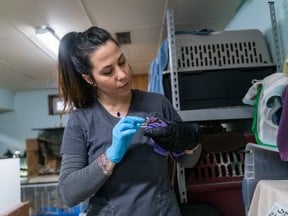VICTORIA – The British Columbia government is partnering with a bear welfare group to reduce the number of bears being euthanized in the province.
Nicholas Scapillati, executive director of Grizzly Bear Foundation, said Monday that it comes after months-long discussions with the province on how to protect bears, with the goal to give the animals a “better and second chance at life in the wild.”
Scapillati said what’s exciting about the project is that the government is open to working with outside experts and the public.
“So, they’ll be working through Indigenous knowledge and scientific understanding, bringing in the latest techniques and training expertise from leading experts,” he said in an interview.
B.C. government data show conservation officers destroyed 603 black bears and 23 grizzly bears in 2023, while 154 black bears were killed by officers in the first six months of this year.
Scapillati said the group will publish a report with recommendations by next spring, while an independent oversight committee will be set up to review all bear encounters with conservation officers to provide advice to the government.
Environment Minister George Heyman said in a statement that they are looking for new ways to ensure conservation officers “have the trust of the communities they serve,” and the panel will make recommendations to enhance officer training and improve policies.
Lesley Fox, with the wildlife protection group The Fur-Bearers, said they’ve been calling for such a committee for decades.
“This move demonstrates the government is listening,” said Fox. “I suspect, because of the impending election, their listening skills are potentially a little sharper than they normally are.”
Fox said the partnership came from “a place of long frustration” as provincial conservation officers kill more than 500 black bears every year on average, and the public is “no longer tolerating this kind of approach.”
“I think that the conservation officer service and the B.C. government are aware they need to change, and certainly the public has been asking for it,” said Fox.
Fox said there’s a lot of optimism about the new partnership, but, as with any government, there will likely be a lot of red tape to get through.
“I think speed is going to be important, whether or not the committee has the ability to make change and make change relatively quickly without having to study an issue to death, ” said Fox.
This report by The Canadian Press was first published Sept. 9, 2024.


































Comments